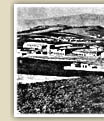
developed slowly and their participation in the industrial sector was limited to special cases.
The demographic boom that took place in Athens during the first two decades
of the twentieth century was due mostly to the extended "exodus from the countryside",
a phenomenon that from the late nineteenth century was on the increase. The city's 453,000 inhabitants in 1920 formed 8.19 per cent of the total population
of the country, despite its doubling between 1907 and 1920.
The influx of people into the capital consisted mostly of young, unskilled and largely uneducated people of rural origin.
They were absorbed by the demand in the industrial sector, for a limited period, and then into emmigration abroad
and the Balkan Wars.'
St. Tsotsoros, I syngrotisi tou viomihanikou kefalaiou stin Ellada
(1898-1939), volume 1 I argosyrti ekviomichanisi, Athens,
National Bank Cultural Foundation (MIET), 1993, p. 70.
|
